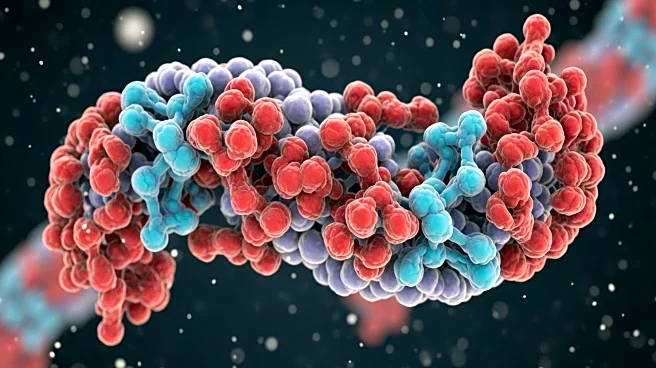What's Happening?
Researchers at Columbia and Drexel universities have made significant strides in understanding the malaria parasite, potentially reshaping future treatment strategies. The study, published in Nature Communications,
reveals the first high-resolution 3D structure of the PfATP4 sodium pump, a critical component for the parasite's survival. This discovery includes identifying a new binding protein, PfABP, which is essential for the pump's function. The research highlights vulnerabilities in the parasite that could be targeted by new drugs, offering hope in the fight against malaria, especially as resistance to current treatments grows.
Why It's Important?
The findings are crucial as malaria parasites continue to develop resistance to existing anti-malarial drugs, posing a significant challenge to global health efforts. By understanding the structure of PfATP4 and its binding partner, researchers can design more effective inhibitors that the parasites may find harder to resist. This could lead to the development of more durable treatments, potentially reducing the disease's impact worldwide. The discovery of PfABP, which appears less prone to mutations, offers a promising target for new drugs, potentially making it harder for the parasite to develop resistance.
What's Next?
The research provides a blueprint for next-generation drug discovery, focusing on designing molecules that target the newly identified vulnerabilities in the malaria parasite. Scientists will likely continue to explore the role of PfABP in stabilizing and regulating PfATP4, aiming to develop drugs that can effectively target this protein. The ongoing research could lead to breakthroughs in anti-malarial therapies, offering new hope in the global fight against malaria.
Beyond the Headlines
The study underscores the importance of examining the malaria parasite in its natural host cell, which has been a challenge in previous research. The innovative techniques used in this study allow for a more accurate understanding of the parasite's biology, potentially leading to discoveries beyond malaria treatment. This approach could be applied to other diseases, offering insights into pathogen biology and drug resistance mechanisms.











